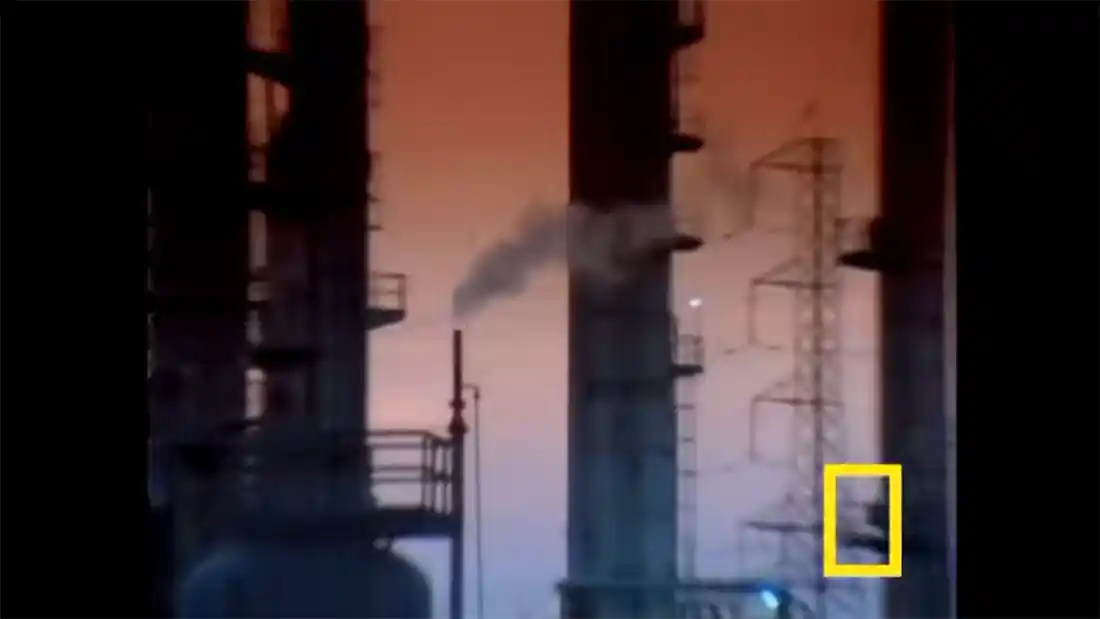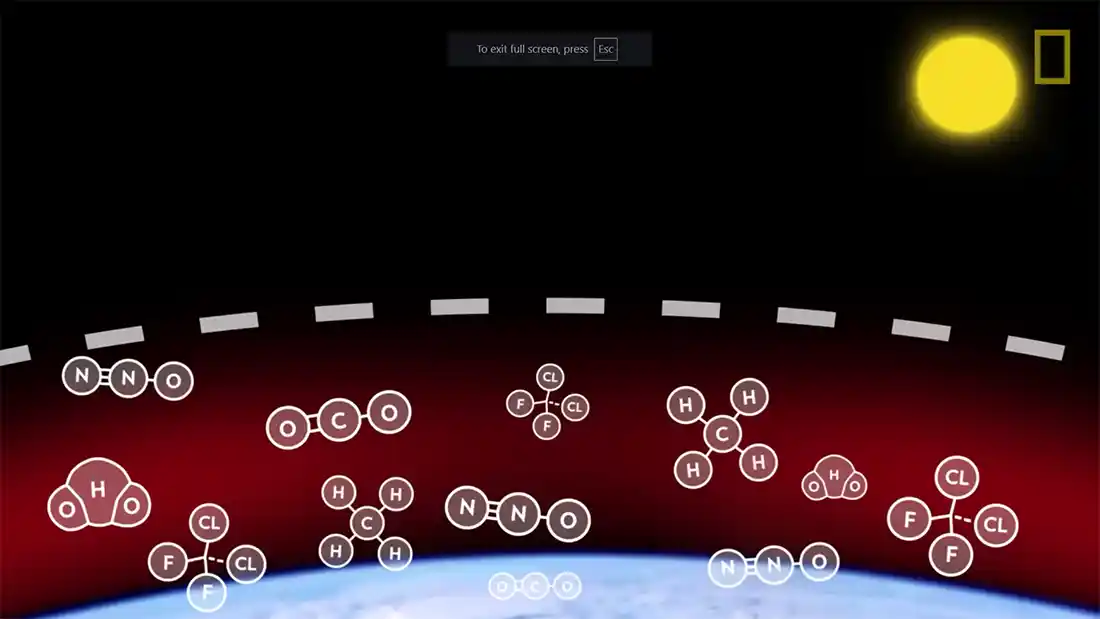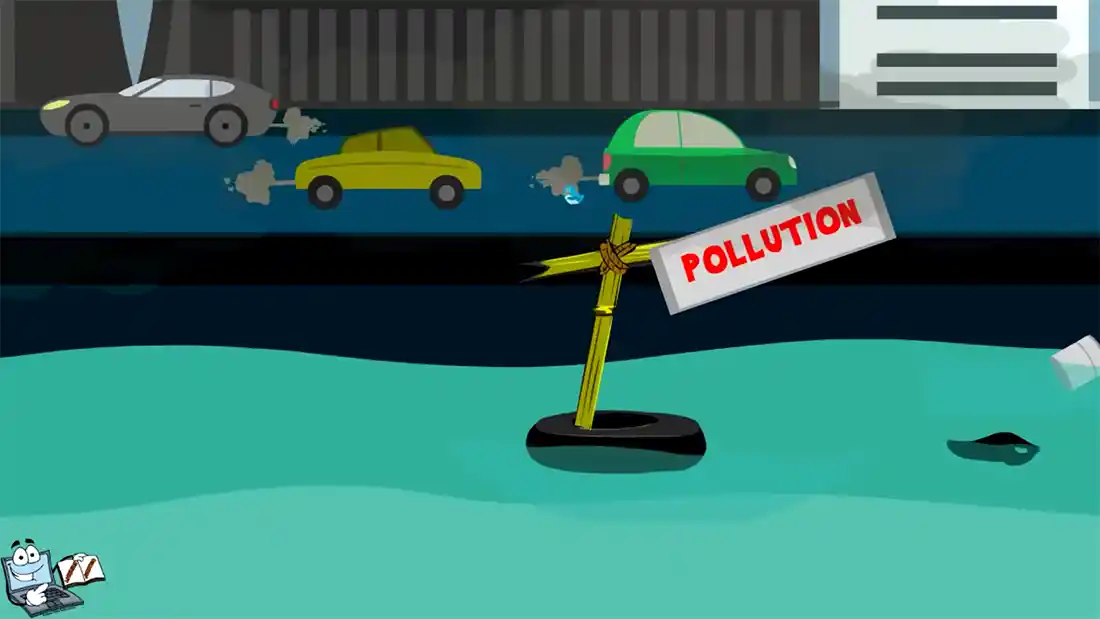

Global warming, climate change, warming the Earth, atmosphere, greenhouse effect, carbon neutral, fossil fuels, smog, ozone layer.
Global warming and climate change are two different components that are often in the news, and although are linked together, are two slightly different things that equate to an eventual destruction of the planet we live in as we know it. But we can do things to stop them getting worse.
Global warming and climate change represent things we need to change or limit the amount of use for so we can keep our planet healthy. Much like we have to keep our body healthy to live as long as we can, we need to look after the planet.
The following still is from a video on global warming, with the following details:
Please click on the image to view the video.

To simplify this, the Met Office say that:

"Climate change referes to a large-scale, long-term shift in the planet's weather patterns and average temperatures."
But what does this mean?
This means that since the 1850s (which is when records began), we have seen a steady increase in temperature each year. While erratic, with some years having a downturn in temperature, the majority of years have been increases, and they are set to continue.
Every time you boil a kettle, it possibly uses some of the finite resources we use to make energy - coal, oil and gas. These all contribute to carbon dioxide emissions, which then increase the temperature around us, and therefore the planet. What is created is a blanket of greenhouse gases between the upper atmosphere and they trap the sunlight from escaping (which happens naturally) from it. This in turn heats the Earth up. This is called the greenhouse effect.

The ozone layer has a hole in it. It was discovered in 1985, and continually grows and recedes during the year. It works like the ebb and flow of a tide, getting thinner between September and November.
The following still is from a video on climate change, with the following details:
Please click on the image to view the video.

Ideally, we can all stop doing everything we do. This would cure a lot of problems. But we would be very bored, and have nothing to do. While companies are set targets to become carbon neutral by 2050, we can still play a part. We can recycle more plastic, use our cars less and walk to the local shops, shop more locally (and not get it from foreign countries - sorry, this isn't a dig, it's simply fact).
This all sounds perfect. And in a perfect world we would all do this, and save the planet. But in actual fact, we can't. And we know we can't. We pop down the local shops in our car, and we boil and reboil that kettle again just to make sure because we've either forgotten that we've done it, or we just want it hot because we've left it for too long.
But, if we can get into a regular routine of just one thing - the kettle for instance - then we can reduce our own carbon footprints.
If we take a look during the COVID-19 pandemic, we notice that things repaired themselves naturally. The ozone layer decreased in size, big cities that had smog and clouded over cleared up. And what did we do? We stopped using mass amounts of fossil fuels. We were told to stay indoors, and go out only if necessary. This temporarily worked. So, our use over the years has had a major effect on the environment, climate change and global warming.
Pollution, physical, mechanical, biological, geological, chemical, destructive, recycling, devices, pollutant, unnatural.
When we think of pollution, we often think about things like air pollution. While this is true, it is only one aspect of pollution. Let's take a closer look at what pollution involves.
The following still is from a video on climate change, with the following details:
Please click on the image to view the video.

This is where we put things into the environment and it causes troubles with it. This includes landfill. When we put materials into the environment, they are called pollutants. You may know that we recycle a lot of materials, as they can be used again, but what happens to the bits that don't get recycled?
Some of it can be burnt down (using an incinerator), but the majority of it will end up in a landfill area, where it just eventually gets covered over to decompose (or not, depending on the pollutant).
You have a mobile phone, don't you? You're probably viewing this page on it right now. If not, then you at least have a laptop or desktop computer where you are viewing this. Now, fast forward a couple of years, and you buy a new device, which means your old one will no longer be required for you, so you either sell it on, or just get rid of it.
When you get rid of it, it can also end up in landfill, but that device has so much inside it, you'd be surprised at just how much it would be worth if it was split apart, and later sold on. A laptop can carry quite a bit of gold in it, as it is a good conductor of electricity, and fast. This means that they use it to conduct between paths on a printed circuit board, etc.
Mechanical pollution is a collection of all these devices - it does include other devices, such as fridges, freezers, microwaves, ovens, and so on - and when they are left in the landfill, they can cause more pollution than regular waste.
This covers a whole range of different aspects - from air pollutants inside our homes, bacteria, moulds, mildew, house dust, and pollen, among others. It includes viruses, too, which are passed on through human to human contact, or animal to animal contact. This isn't just centred on what biological factors are included in the home, but also out in ecosystems. In the outside world, aspects such as pollen, moulds, bacteria, viruses, and other aspects can affect an ecosystem much in the same way it can your home.

When NASA launch a rocket or space shuttle, it produces 28 tonnes of carbon dioxide. Compare this to a car's production over a month, which is around half a ton. The amount of pollutant that this generates as much as the size of New York City over a weekend.
For a geological view on pollutants, it can include things like soils being contaminated, Mercury deposits in the ground, landslides and more. It can mean the wrong things in the wrong place at the wrong time, such as floods (anyone remember the Boscastle floods in 2004?) or the sea erosion that's been happening on the North Norfolk coast? Although we may think of these as natural disasters, they are also geological pollution - take Boscastle for instance, if you've read any of my interesting facts, you may know that an oak tree will soak up 50 gallons of water a day. Had there been more trees planted around the area, there might not have been such a bad flood. Although, there were other attributes, as you can read on ![]() here in this article.
here in this article.
A chemical pollutant is something that is considered to be unnatural in the ecosystem, and it means that there is a rise or decrease in level of the chemical. It could mean a once fertile piece of land may become barren due to lack of water, or an overuse of weed killers. Let's face it, we all use a weed killer on our paths that have overgrown with grasses and weeds.
A lot of the time, a chemical pollutant is something that has had human activity - manufacturing areas, handling, storing and disposing of chemicals. Places like an oil refinery, coal power plants and agricultural use of insecticides.
This type of pollution is concerning, as we have cut down a lot of forest areas for use in construction and paper making, as well as other uses. But we do seem to be changing for the better. More and more companies are now using recycled materials, or sustainable materials to make their products with.
Disclaimer | About Me | Sitemap
Website design by SyntaxHTML.



Blue icons adapted from icons courtesy of Smashicons.com